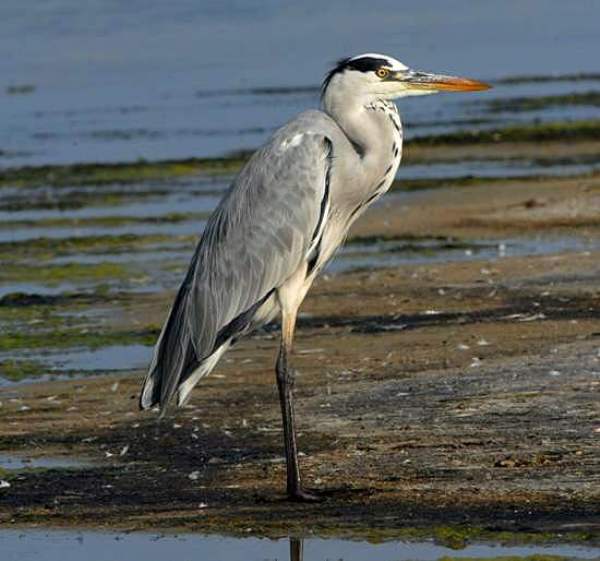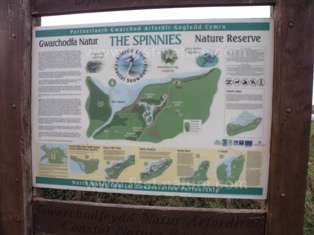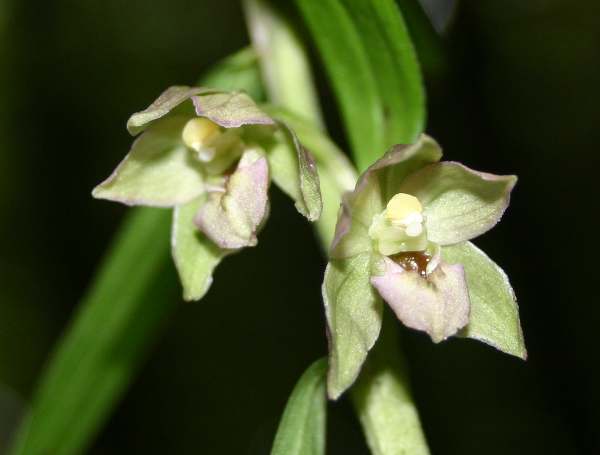Trees Birds Mammals Fish Amphibians Reptiles
Wild Algarve
Bookshop
Spinnies, Aberogwen - North Wales Wildlife Trust Reserve, Near Bangor, North Wales


Below: Grey Herons are one of the birds to see at Spinnies

Spinnies Nature Reserve is very close to Bangor, and is situated on the edge of the Menai Strait at mouth of the River Ogwen. This nature reserve, along with Traeth Lafan which is connected to it, and Morfa Madryn and Morfa Aber, all three of which are managed by Gwynedd County Council, is one of the top locations in Wales to see wildfowl and waders.
Spinnies consists of a small woodland with a series of ponds and a lagoon, Aberogwen Lagoon. The lagoon and ponds were created when a sharp bend in the River Ogwen was deliberately cut off to form a lake, making Spinnies the ideal home for numerous species of birds and many other animals, plants and insects.
The reserve forms part of the Penrhyn Estate, and since 1983 it has been managed by North Wales Wildlife Trust (NWWT).
Directions
Grid Ref: SH613721
From Bangor follow the A5 road in the direction of Betws-y-Coed. When you reach the roundabout at the entrance to Penrhyn Castle turn left and follow the 'brown duck' sign about 1km (2/3 mile) along the road to the nature reserve.
The car park serves both Spinnies and Traeth Lafan, and you will need to park and walk back to the entrance for Spinnies Nature Reserve.
Be careful how you park because the car park is used to turn large farm vehicles and is also where the cockle-pickers park their vans during their working season.
Below: Information at the Reserve

Access
The reserve is open all year round.
The paths are generally level and easy to negotiate, and the Cuddfan Bird Hide on the western side of the reserve is suitable for access by wheelchair users.
There are several benches alongside the reserve paths where you can sit and enjoy the birdsong and wildlife in this lovely place.
Facilities
There is an information board at the reserve as well as two birds hides, one on either side of the lagoon. There are no other facilities at the nature reserve but public toilets, shops and cafés are all nearby in Bangor.
Description of Site
Dog’s Mercury (Mercurialis perennis) and Hart’s-tongue Fern (Phyllitis scolopendrium) are two of the plants that you can see at Spinnies, where in spring there are also carpets of Snowdrops (Galanthus nivalis) to enjoy. Look out for Broad-leaved Helleborine (Epipactis helleborine) in some of the more shaded areasas well as on the edges of paths within the reserve.
Below: Broad-leaved Helleborine flowers at Spinnies

The woodland and extensive reedbeds at Spinnies are also popular with many kinds of birds. Common Chiffchaffs (Pylloscopus collybita), Firecrests (Regulus ignicapillus), Bullfinches (Pyrrhula pyrrhula), Blackcaps (Sylvia atricapilla) and Willow Warblers (Pylloscopus trochilus) can usually be seen there.
The water at Spinnies means this is a great place for seeing brilliantly-coloured Kingfishers (Alcedo atthis) as they hunt for small fish and other prey along the edges of the lagoon. Snipe (Gallinago gallinago) and Water Rails (Rallus aquaticus) make their winter homes at Spinnies Nature Reserve, too.
If you are a keen bird-watcher then a visit to this reserve is essential. Many rarities have been recorded in the area including, in 1984, a Pied-billed Grebe (Podilymbus podiceps) which was a first recording for Wales. Large numbers of Greylag Geese (Anser anser) also assemble in the area, and Great Crested Grebes (Podiceps cristatus) and Red-breasted Mergansers (Mergus serrator) arrive in late summer.
Grey Herons (Ardea cinerea) stand patiently in the shallow edges of the lagoon, pools and River Ogwen waiting for unsuspecting prey to swim in their direction.
In winter Oystercatchers (Haematopus ostralegus) and Dunlins (Calidris alpina) appear along with Northern Lapwings (Vanellus vanellus), Bar-tailed Godwits (Limosa lapponica), Curlews (Burhinus oedicnemus) and Redshanks (Tringa totanus).